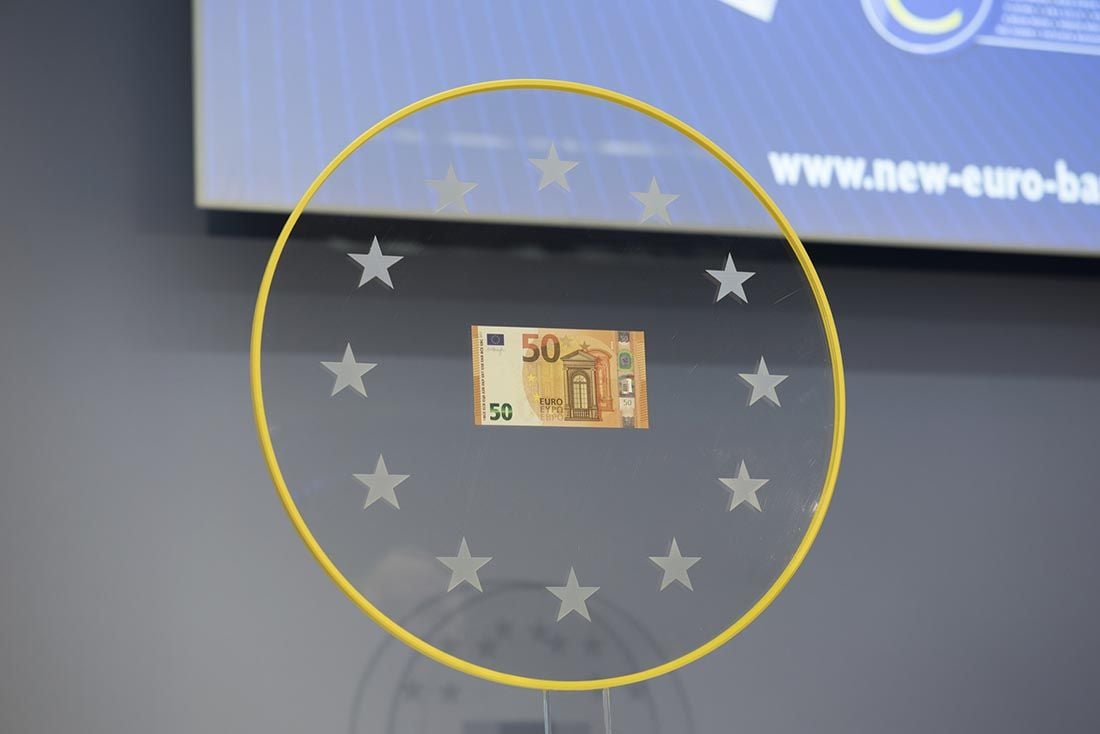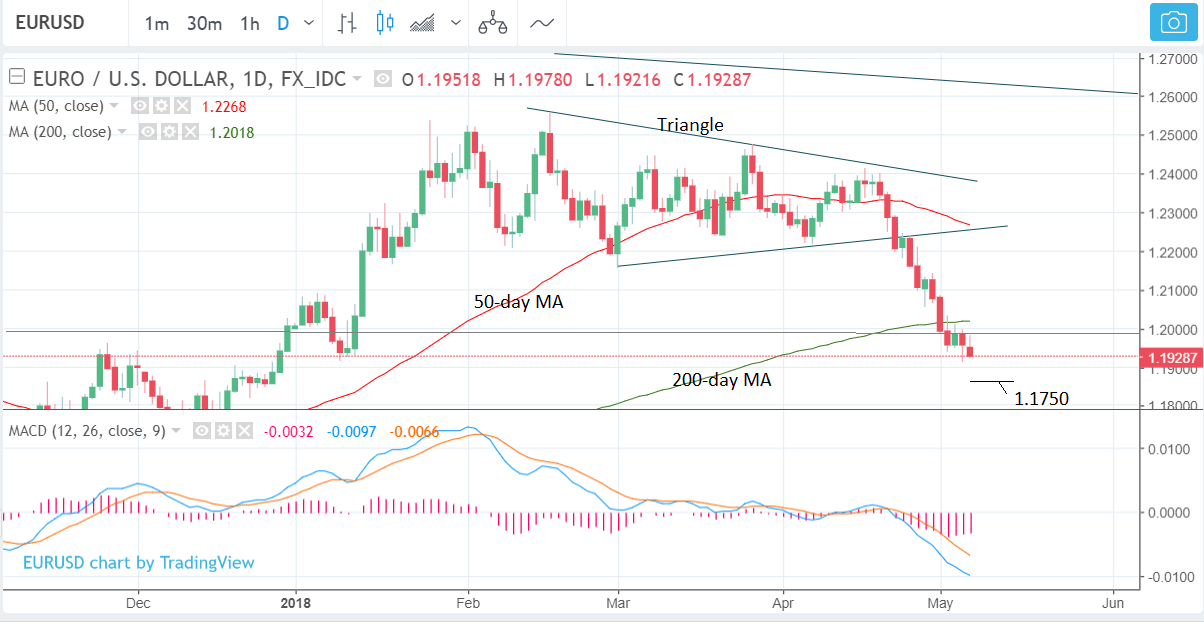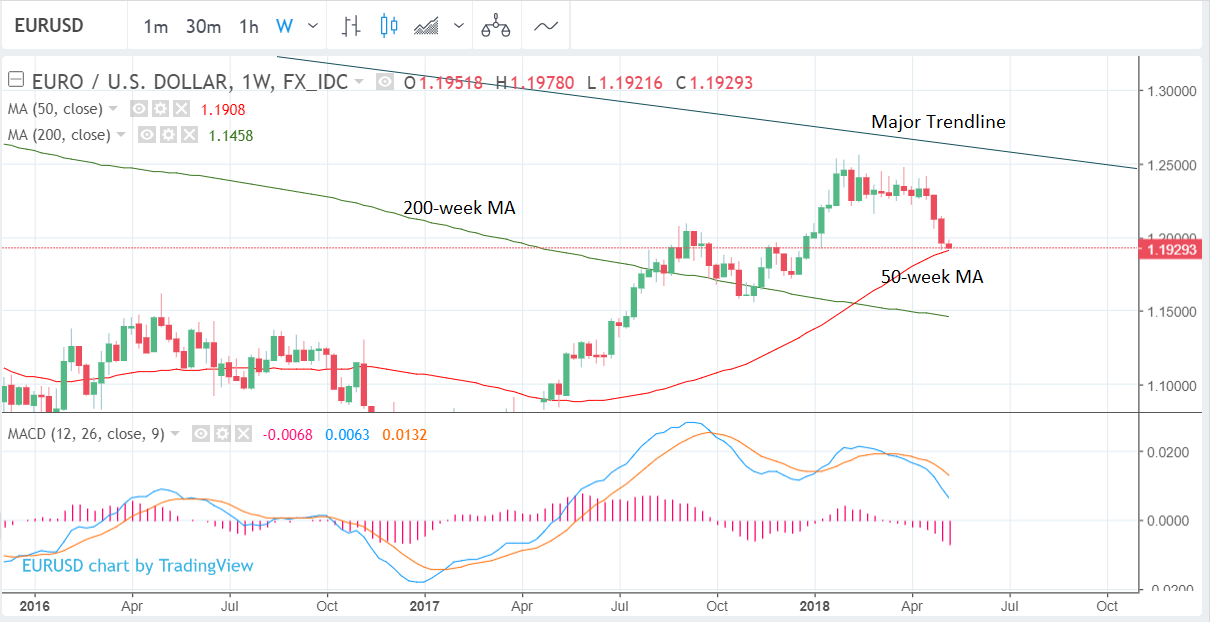The Euro-to-Dollar Rate's Forecast For the Week Ahead
- EUR/USD has fallen to below 1.2000 on Euro-area growth fears
- The main events for the Euro are a speech by ECB president Mario Draghi and various broad economic assessments
- The Dollar's main release is inflation data for April

© European Central Bank
One Euro buys 1.1919 Dollars at the start of the new week on the interbank market as fears about a slowdown in growth in the Euro-area have pressured the exchange rate lower.
Important economic reports from the EU may influence the market's view of the region's economic outlook in the week ahead and could impact on EUR/USD.
From a technical perspective, the Euro-to-Dollar rate broke out of a triangle pattern at the April highs and has since declined steeply.
The trend has probably reversed and the new downtrend is more likely to extend than not, therefore, the overall bias is for expecting more downside.
The exchange rate has clearly broken below a major obstacle in the form of the 200-day moving average (MA) and has fallen to a new low of 1.1910, however, it has also now arrived at another major obstacle in the form of the 50-week MA (see below) at 1.1908 which is expected to further impede progress lower.
The break below the 200-day MA is a key sign that the bearish trend is set to extend, however, we would ideally wish to see a break below the 50-week too for confirmation of more downside.
A break below 1.1850 would probably provide confirmation the 50-week had been breached and lead to an extension down to the next target at 1.1750.
There are some signs the move down from off the highs may be a little overstretched. For example, EUR/USD has extended beyond the downside target calculated using the triangle pattern as a guide, which was 1.2000.
There are no signs, however, of a bullish rotation taking shape yet directly from price action so the downtrend remains intact and likely to continue.
Data and Events to Watch for the Euro
It is a quiet week for the Euro from a data perspective with the main releases consisting in economic reports from various major institutions of the EU, however, these could be instructive in providing an insight into whether the EU thinks the current slowdown is the start of a deeper malaise or a temporary blip.
The first release is the Economic Forecast of the European Commission out at 10.00 GMT on Tuesday, May 08.
On Thursday the European Central Bank's (ECB's) Economic Bulletin is released at 9.00.
Finally, ECB president Mario Draghi will be delivering a speech on Friday, May 11 at 14.15, which could provide hints as to his views about the situation in the Eurozone and the ECB's monetary policy strategy.
Of late we have seen the Euro struggle as economic data has underwhelmed against consensus expectations, suggesting that perhaps the strong spurt of economic growth that propelled the currency higher in 2017 might be fading.
Draghi's assessment of the Eurozone's growth trajectory could be key.
Data and Events to Watch for the Dollar
US Inflation for April is probably the most important release for the Dollar in the week ahead, when it is released at 13.30 GMT on Thursday, May 10.
Expectations are for US inflation to rise by 0.3% in April from -0.1% in March and core inflation to rise by 0.2% month-on-month.
Inflation drives interest rate expectations because central banks raise interest rates in response to rising inflation, and higher interest rates are usually supportive of a currency, so a higher inflation reading on Thursday could drive up the Dollar.
The other major release for the Dollar is Michigan Consumer Sentiment which is out on Friday at 15.00 and is forecast to show a slight pull-back to 98.4 from 98.8 previously.
Political drivers could also resurface as the trade delegation headed by Treasury Secretary Mnuchin returns from Beijing, presumably with some sort of a deal.
The week also sees a substantial slew of commentary from members of the US Federal Reserve, including, Fed chair Powell on Tuesday, May 08 at 8.15 and voting member Bostic on Wednesday at 18.15.
Get up to 5% more foreign exchange by using a specialist provider to get closer to the real market rate and avoid the gaping spreads charged by your bank when providing currency. Learn more here.






